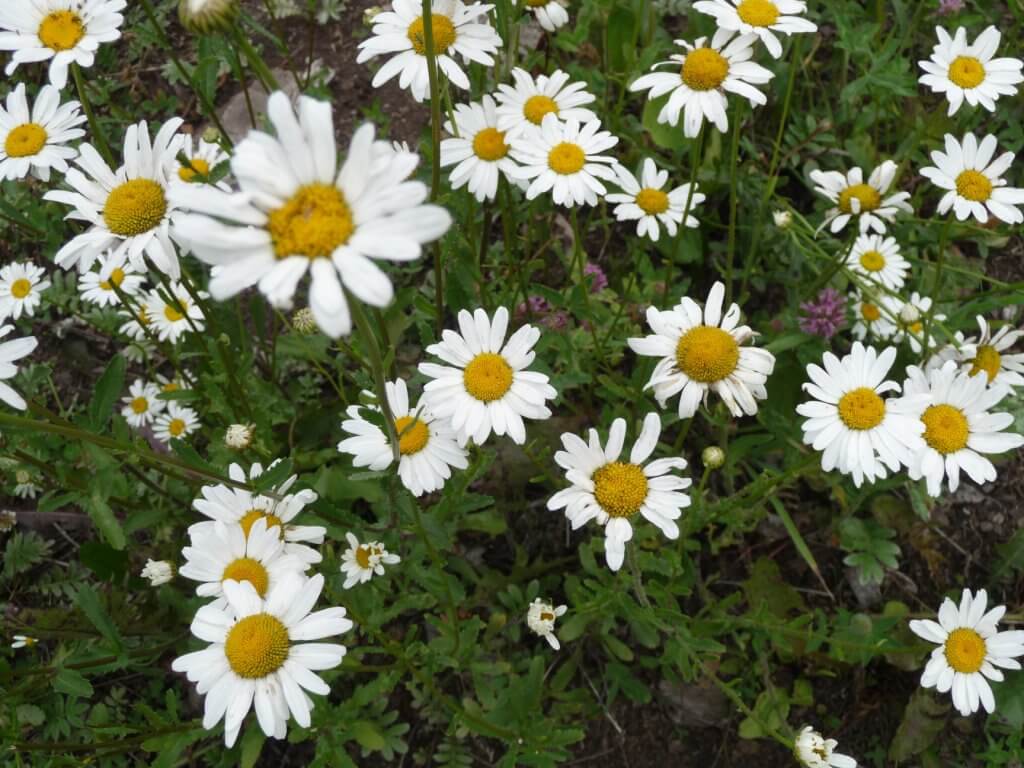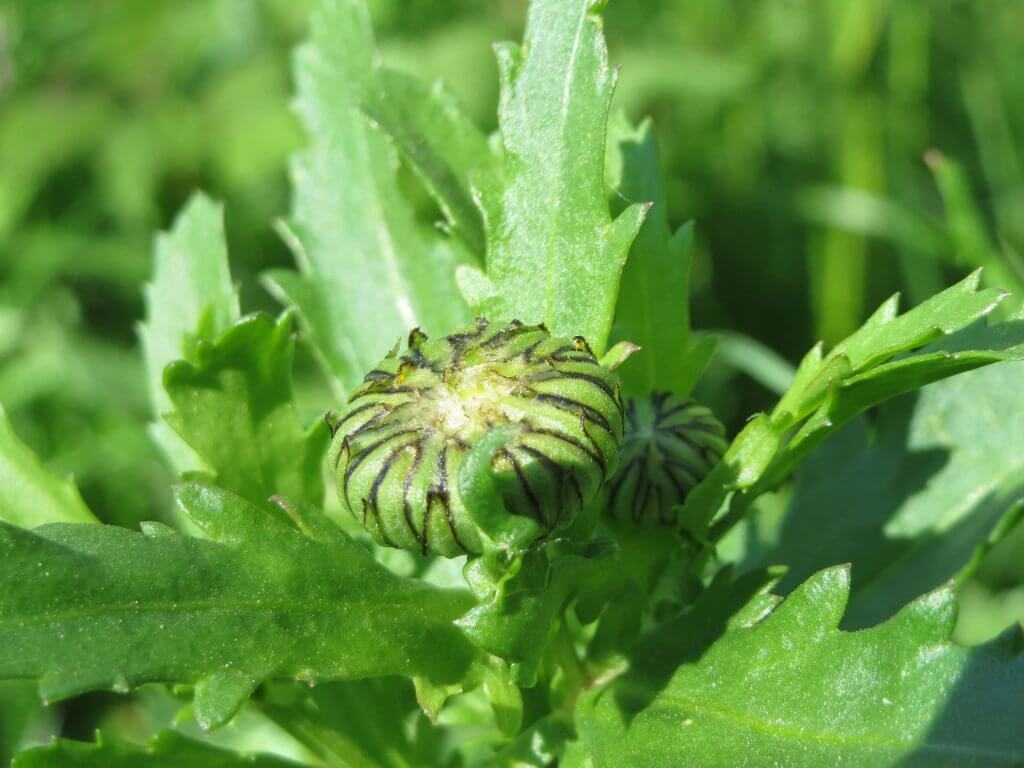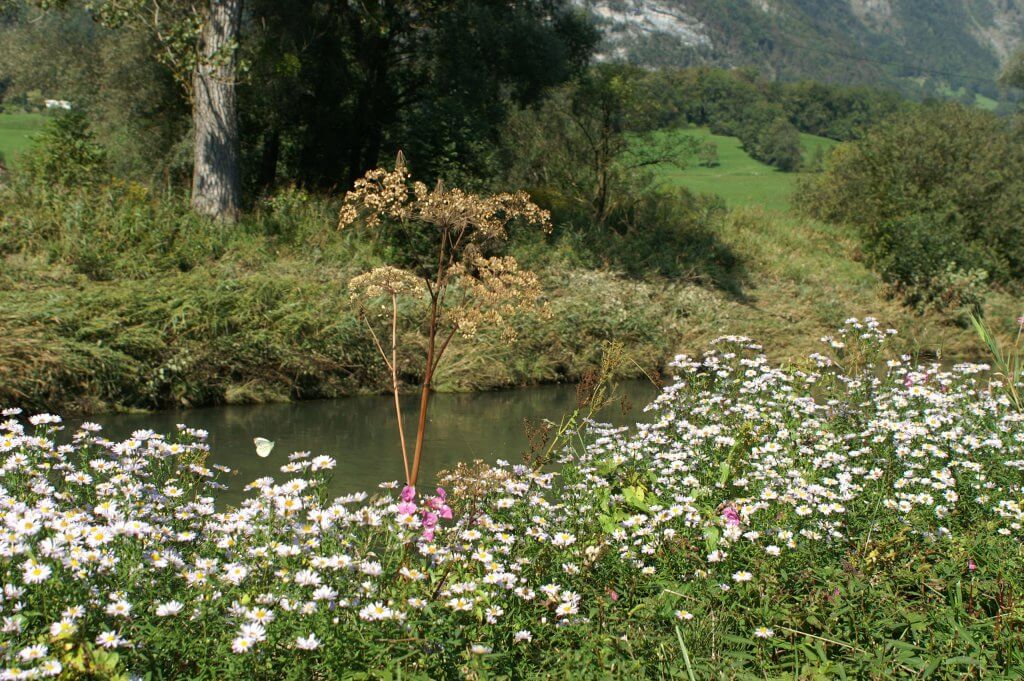Ox-eye daisies (Leucanthemum vulgare) are a species of flowering perennials that grow throughout the world. They are originally native to Europe and some areas of Asia with a cooler climate, however you’ll now find them growing prolifically in North America. They are also commonly known by the names dog daisy, field daisy and also moon daisy.
You’ll see them growing along hedgerows, roadsides and mixed within meadows and wild grasslands. They are often found colonising unused fields and urban areas, particularly in damp or moist areas like a river bank. They are listed as a weed within many areas. This is because they spread easily via shallow rhizomes and are also avoided by most livestock, allowing them to dominate cattle fields.

As its name ‘daisy’ suggests, the ox-eye daisy has a center of yellow florets radially surrounded by long, white oval shaped petals. Unlike the common lawn daisy (Bellis perennis), the ox-eye has a larger flower head diameter of 6cm, compared to 2cm in the common daisy. It is also much taller, reaching a height of up to 80cm. The stem is often quite hairy closer to the soil. Its leaves are lobed and often toothed, especially the leaves near the top of the plant.
Edible parts and other uses
The young and unopened flower buds and leaves of the ox-eye daisy are edible. Both can be eaten raw and added into a salad with your favorite dressing, or added into a stir fry. The flower buds could also be picked, much like a caper. These can then be used in the same way as a caper, whether adding them to a pasta sauce or stew for a sweet crunch. The opened flower heads could also be dried and steeped in boiling water to create a herbal tea.

Cautions
Daisies are a very easy plant to identify as a group, however it can sometimes be challenging to tell individual species apart. Luckily lookalikes of the ox-eye daisy are edible; chamomile, feverfew and cotula are common throughout the states. The flower heads of these species also make a wonderful floral tasting herbal tea with soothing properties.
Ox-eye daisies also have a history of causing allergies and contact dermatitis when they come in to contact with bare skin. So if you have a hay fever or sensitive skin it is best to wear gloves when harvesting, and cook them rather than consuming them raw.
Foraging
The flowers tend to bloom in late spring or early summer, depending on your state. So generally the best time to forage for the un-opened blooms is early April. A riverside walk or hike through wild woods and meadows will probably bring you to a patch of ox-eye daisies.
It is often best practice to brush your clothes and shoes after foraging to try and shake away any ox-eye daisy seeds that may be clinging to you. This is to help in stopping the spread of this non-native and prolific wild edible.

Did you know…
The flowers of ox-eye daisy have a long history in Europe for their medical uses. Many healers created concoctions with the dried flower heads to create medicines that soothed many ailments. From coughs, wounds and respiratory issues, to promoting sweating and urination to help rid the body of any toxins. Although a lot of these claims are yet to be supported by modern science, a soothing ox-eye tea can help with relaxation.
Conclusion
Ox-eye daises can be planted within wildflower or meadow borders in your yard. Perfect for attracting pollinators and butterflies. As well as adding a cottage-style look to your garden, you will also have a great wild edible on hand. Whether you are creating floral teas or adding the young leaves and flowers to a sauce.
Written by Hannah Sweet
Hannah is a freelance writer and graphic designer from the UK. With a penchant for travelling, photography and all things botanical, she enjoys writing about a wealth of topics and issues, from conservation and slow living, to design and travel. Learn more about her writing and design services at www.sweetmeanders.co
Many of our readers find that subscribing to Eat The Planet is the best way to make sure they don't miss any of our valuable information about wild edibles.
See our privacy policy for more information about ads on this site






